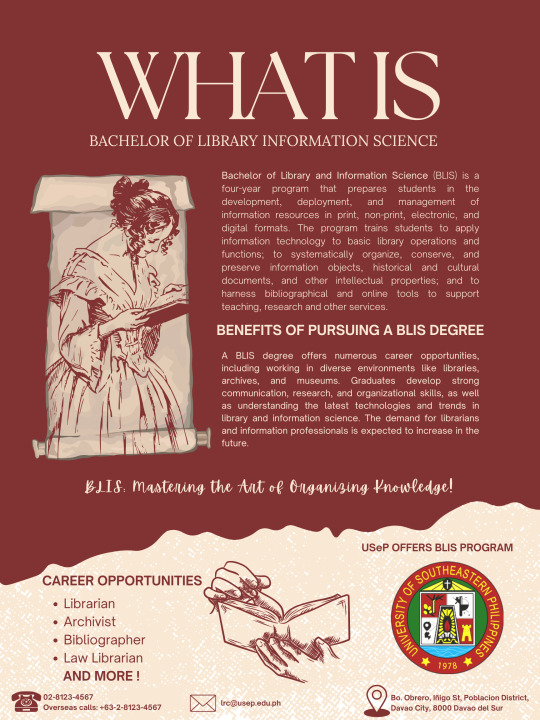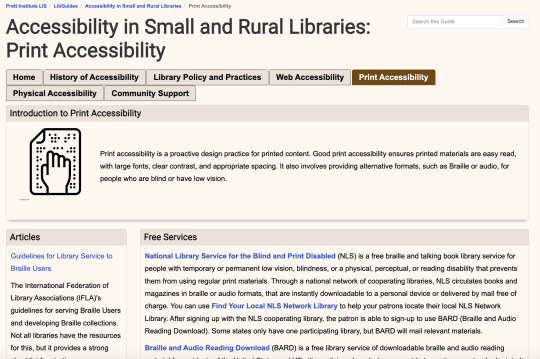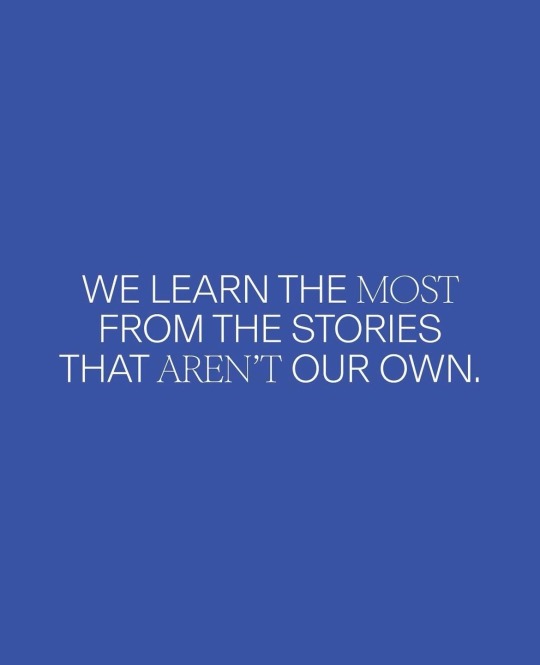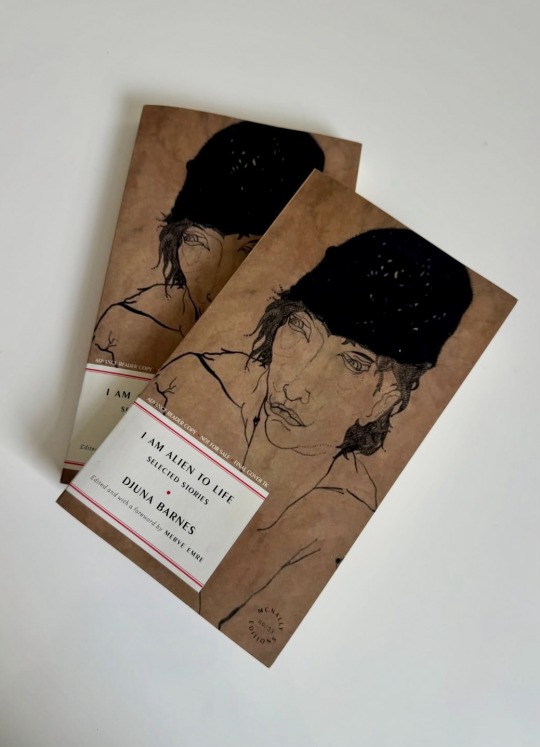#LibraryScience
Explore tagged Tumblr posts
Note
That reel of her talking about how people inspire her, makes me laugh. What is so inspirational about a woman who's never lifted a finger in her life? And her top looks cheap as hell too. Especially when it looks big on her now and is swallowing her up. I'm surprised no shippers are asking about Austin.
Ugh. Her Library Science events are a total joke. What do you all think about this?
#kaiaisajoketosociety#anti kaia#kaia gerber#libraryscience#instagramreels#peoplearestillkissinguptoher#12joeywheelerfangirlasks
4 notes
·
View notes
Text
instagram
#JKSGroup#EducationConsultancy#SecondChance#JulyBatch2024#FutureReady#Science#YogaScience#CommerceManagement#EngineeringTech#Humanities#SocialScience#Agriculture#Horticulture#LibraryScience#Journalism#MassCommunication#ApplyNow#StudentSuccess#Instagram
0 notes
Text







Management of Archives and Special Collections
Project Title: The Edward Schwartz Collection
Project Description: This group project, which was completed for Management of Archives and Special Collections, required our group to create a processing plan, finding aid, box level inventory, and outreach plans for a collection of papers and photographs belonging to Jewish American photographer Edward Schwartz. I was especially fond of this collection as Schwartz was a sensitive and thoughtful photographer who captured subjects of interest of mine; the Communist Party, his time in Japan, and a developing and changing New York City (specifically the Lower East Side.)
Methods: We began by going through the four boxes that contain the collection and determining if there were any pressing preservation concerns. After doing this, we methodically looked through each folder and assessed the collection’s contents and how to best represent it in our finding aid and inventory document. We determined it would be best to create a folder-level inventory, organized by box. From there, we came up with two separate outreach plans that could be employed as outreach surrounding the collection. The first outreach plan suggested an exhibit showcasing Schwartz’ photography, particularly his street photography and documentation of local politics in the Lower East Side. The second plan outlined educational programming that utilized easy photographic processes for school-aged children.
My Role: For this project, I worked along with my group mates to process photographs and documents, research the contents of photographs to best describe them and understand the collection, and created a drive of selections of his photographs. These digital images were designed to easily express the larger body of work. Stand out images include photographs of Julius and Ethel Rosenberg, Okinawa during the Second World War, and travel photographs.
Learning Outcomes: Foundations of Information
Rationale: This project provided a hands-on opportunity to learn basic principles in cataloging, digital records creation, knowledge organization and the presentation of a collection in a new way. This was done in several stages, and subsequently it provided an opportunity to learn about a variety of information contexts. By creating a processing plan, inventory, finding aid, and then planning outreach for a collection, I learned about how information can be expressed in a variety of ways while creating various access points for users. Taking four boxes of unsorted documents and photographs and transforming them into a searchable and compelling written history with a digital presence was a wonderful experience. This project reinforced how these core concepts can have a real-world influence on how information is created, accessed and disseminated.
A selection of images from this collection can be viewed here.
A presentation on this project can be viewed here.
The inventory spreadsheet our group collaborated on can be viewed here. All other deliverables for this assignment, including our final rationale paper, can be viewed here.
1 note
·
View note
Text
A video essay from one of my Master's in Library Science courses, Human Information Interactions, on information bias specifically through the lens of semiotic theory.
I was desperately searching for a way to link my previous studies in art history with what I was having to study as part of the Archives and Records Management track. I was extremely depressed at this point in time, joy and pride in my work was rare and fleeting, only found when art and art history could be wedged in between me and my grade. As a result, I wrote this paper in one night and recorded this presentation at 3 am, only 5 hours before it was due.
1 note
·
View note
Note
https://www.instagram.com/stories/libraryscience/ So she will be even in theater now?
Yes -- unfortunately 😒


She's just following the Austin Butler manual to success. 🙄
It never ceases to amaze me how some untalented people keep getting multiple chances in Hollywood even though they suck at their job, and you know good and well that they wouldn't put forth this amount of energy for others. 🙄
Hollywood keeps trying to make Kaia Gerber happen, and I just don't get it.
11 notes
·
View notes
Text

"Discover BLIS: Your Path to Mastering Knowledge, Organizing Information, and Building a Future in Library and Information Science!"
#LibraryScience #OrganizingKnowledge #FutureReady #InformationManagement #DigitalLibraries #CareerInLibraries #PreserveKnowledge #EducationForTomorrow #UsepBLIS
2 notes
·
View notes
Text
B.L.I.S Admission 2025 Open- Course Details, Fees & Career Opportunities#ushamartinuniversity#blisadmission#libraryscience#applynow
0 notes
Photo

The day doesn’t end at 5 for Andrew. When he’s not in the shop, he can be found teaching library preservation and bookbinding for the School of Information Science at the University of Illinois. #libraryscience #preservation #bookbinding #onlineonstructor https://www.instagram.com/p/CaQqMNPMFB6/?utm_medium=tumblr
2 notes
·
View notes
Photo

I love buying used library books, especially when they have these doofy genre stickers on the spine. You can peel them off and put them on stupid places, like your current Fauxskine or my Kindle No Crushit Thing. #libraryscience #stickers https://www.instagram.com/p/CG3m6lDAae7/?igshid=bqqo6b1f2br2
4 notes
·
View notes
Text
instagram
#LibraryScience#InformationManagement#FutureLibrarians#DigitalLibraries#LISStudents#KnowledgeIsPower#ArchivalStudies#Instagram
0 notes
Text

Reference and Instruction
Project Title: Accessibility in Small Rural Libraries
Project Description: LibGuides are digital tools used by librarians, generally for other librarians and educators, to bundle information together for a specific area of study or interest. This LibGuide was developed as a tool for other librarians who would like to make their libraries more accessible - specifically in smaller, rural libraries. This guide includes general information about disabilities, a history about the Disability Justice Movement, resources for librarians, information about accessible policy in libraries, and digital resources for patrons who struggle to access their local library in person.
Methods: My group mates and I were interested in creating a resource for librarians in small rural libraries who would like to accommodate patrons who have disabilities, but who might lack resources to do so. Rural librarians face tremendous pressure to serve their communities, often in libraries that are understaffed in areas where patrons commute over 2 miles on average to access services. Our LibGuide felt like an opportunity to create something helpful that would not only benefit librarians, but patrons who might struggle to access services in person. Our team met weekly while doing independent research and began organizing various tabs based on the type of resources we found.
My Role: I compiled a descriptive bibliography, researched resources available for individuals who experience barriers while accessing print and web-based materials, and consulted on appropriate language and accessible web-design for the guide.I also included a history on the DIsability Justice Movement as I felt it was useful context for the ADA, WAG (Web Accessibility Guide) and other information presented throughout the guide.
Learning Objectives Achieved: User-Centered Services
Rational: Working together, my group mates and I learned how to create a clear and thoughtful LibGuide and gained experience making decisions on how to create an educational information environment that promotes browsing, searching and discovery. Doing so required a lot of consideration of how this tool would be accessed by patrons, how users could most easily interact with this tool, and decisions about the amount of information that should be included. This project strengthened my ability to consider the needs of patrons while collecting and presenting information in a variety of different formats for different access points.
Learning Objectives Achieved: Research.
Rationale: To create an accurate and useful guide, my group mates and I sought out sources from a variety of places while fact-checking and considering credible sources. While not much is written about this particular topic in the field as it’s so specific, there are many case studies about separate components of what we were investigating. We were able to find sources about accessibility in libraries, needs of small rural libraries, statistics about library usership in rural places throughout the US and then connect all of this research into a cohesive argument that small rural libraries could benefit from support for accessibility initiatives.
The research for this LibGuide also necessitated sensitivity and thoughtfulness about the needs of others. While I can assess my own needs as a low vision library patron, every individual’s needs vary. This is especially true when considering potential access needs, and taking these needs out of a familiar context. We chose to create this guide because we wanted to package information together in a way that would be helpful for our target demographic. This required looking at both academic sources and journals written by librarians about the needs of institutions, but also searching for credible sources written by academics and activists within the disability community at large describing needs that aren’t being met by libraries. This resulted in a diverse array of sources, findable in our Annotated Bibliography.
The guide can be viewed here. The final paper can be read here.
While doing this research I became personally interested in libraries and archives that house disability Histories. I created an In-Progress Bibliography of these sources that can be found here.
#libguides#libraryscience#pratt school of information#reference and instruction#accessibility#disability justice
1 note
·
View note
Photo

Surprise, we're releasing a new single on Friday, because we all deserve something nice. "I Am a Librarian" is an anthem, a love letter, a manifesto for the seekers, oddballs, and dreamers: a message of hope for all who are waiting to find their time and place. And of course a tribute to all the actual librarians. Preorder on @bandcamp (as a digital download OR as a sticker that includes TWO downloads, one to keep and one to give away): https://charmingdisaster.bandcamp.com/album/i-am-a-librarian Presave on @spotify so it shows up in your library(!) the moment it's released: https://show.co/sukXHYI We recorded this song last summer at @thesugartank in Lancaster, PA with Mike Musser at the board and @wren_dering singing backup. @phantomcenter mixed and mastered it at @tonalpark in Takoma Park, MD and the beautiful cover art is by @susan.saas. Releases May 1, 2020. #library #librarylife #librarylove #libraryscience #librariansofinstagram #librarian #librarians https://www.instagram.com/p/B_h_VvLj7lH/?igshid=1vudg4lxabd31
18 notes
·
View notes
Text
LIS 5937-723 Web Design for Libraries
Welcome to the course!
I was super excited about this course because I’ve played around with web design a lot as a teenager, but haven’t done so in a very long time. I’m hoping to update my skills, since the handmade (artisanal?) HTML code from fifteen years ago just ain’t going to cut it anymore. I’m in the final semester of the Master’s in Library Science (MLIS) program at the University of South Florida, so I’ve been working a lot with webdesign lately a I finish up my final ePortfolio. I’m also taking Web Archiving and Digital Storytelling this semester, so everything is overlapping nicely.
1 note
·
View note



